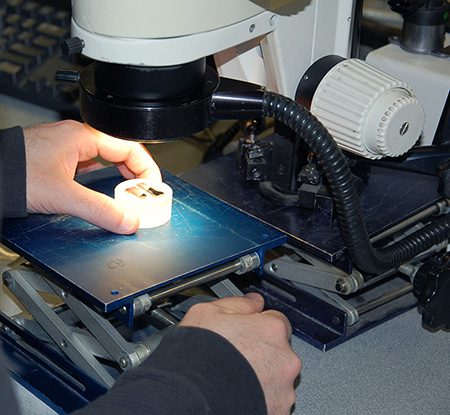IMR Materials Testing Technical Blog
The 2 Most Effective Testing Methods for Evaluation of Thermal Spray Coatings
Thermal spray coatings can be applied using a range of different processes but essentially the application method for each procedure is very similar. The feedstock, in either powder or wire form, is reduced to a semi-molten or molten form by the use of controlled combustion energy (HVOF, HVAF, Combustion wire or Powder spraying) or electrical energy (Plasma or Arc Wire spraying). The heated material stream is then propelled onto the surface of the component using the kinetic energy formed from a gas stream. Upon impact with the surface, the molten or semi-molten coating material forms a splat which then contracts as it cools forming an intimate bond with the substrate. Each process has its own specific characteristics and the most commonly utilized are HVOF and Plasma spray.
COATING EVALUATION METHODS
There are two widely used testing method categories for evaluating the characteristics and efficacy of coatings: metallurgical examination, and mechanical testing. These methods identify important parameters of a coating’s performance specifications, as well as potential application and in-service operating issues.
MECHANICAL TESTING

- Tensile and Shear testing: a coating test sample is set and mounted into a metal fixture and vertical force is applied until failure. The resulting data is evaluated to determine if the sample attained product specifications.
- Taber Abrasion testing: the Taber wheels apply cyclic abrasive forces to the sample, creating a loss of mass, which is then used to calculate the wear index of the sample.. Because of its simple and cost-effective process, Taber abrasion can be used to gather comparable mass-loss data from multiple coatings.
- Corrosion Resistance testing: since one of the primary applications of thermal spray coatings is to inhibit metal degradation, this process is utilized to replicate operating environments. Fixed-time, cyclic, and environmental impact on a material are often measured with salt spray testing to ASTM B117. More corrosive toxic environmental conditions can be duplicated with Electrochemical Corrosion evaluation.
METALLURGICAL EXAMINATION

- Delamination: the loss of coating adhesion to a surface or between coating layers.
- Porosity: a measure of the void spaces in a material.
- Microstructure: identification of grain size and orientation, inclusions and phase analysis.
- Unmelted Particles: will result in particle pull-out during finishing and result in porous surface finishes.
- Interface Contamination: dust, grime and oils on the substrate surface can severely affect the coatings adhesion properties.
This is a brief overview of widely used methods of testing for coating evaluation. IMR Test Labs, a business unit of Curtiss Wright Surface Technologies, is an independent, A2LA and Nadcap accredited materials testing lab. We hold many manufacturer certifications, such as GEAE and Pratt and Whitney, for testing supplier coatings to their specification. Contact us for more information on our Thermal Spray Coating Evaluation capabilities.


